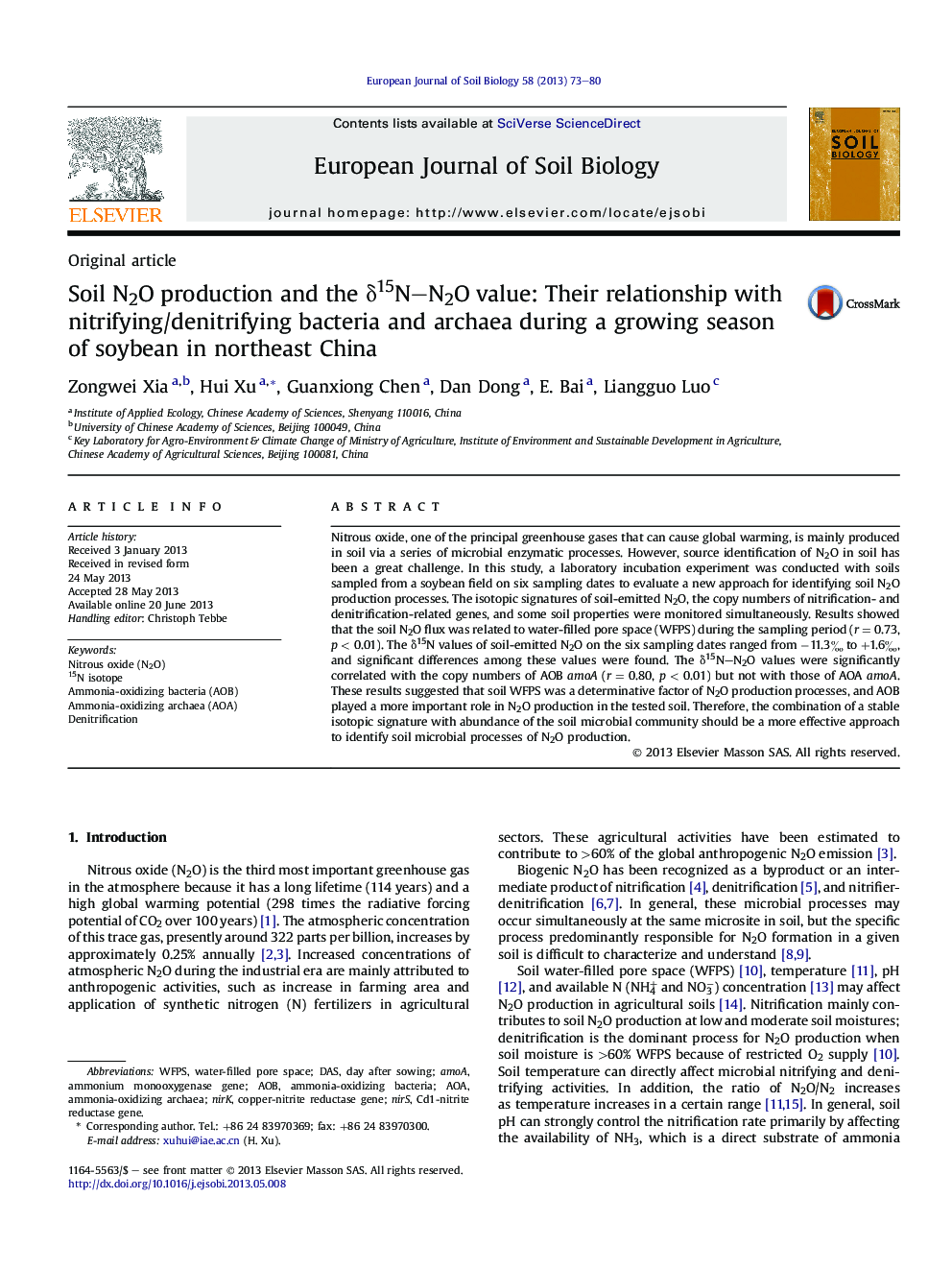| Article ID | Journal | Published Year | Pages | File Type |
|---|---|---|---|---|
| 4391930 | European Journal of Soil Biology | 2013 | 8 Pages |
•Soil N2O fluxes and production processes were mainly affected by soil WFPS.•Soil AOB amoA abundance was significantly correlated with δ15N values of emitted N2O.•AOB rather than AOA played a more important role in nitrification of the tested soil.
Nitrous oxide, one of the principal greenhouse gases that can cause global warming, is mainly produced in soil via a series of microbial enzymatic processes. However, source identification of N2O in soil has been a great challenge. In this study, a laboratory incubation experiment was conducted with soils sampled from a soybean field on six sampling dates to evaluate a new approach for identifying soil N2O production processes. The isotopic signatures of soil-emitted N2O, the copy numbers of nitrification- and denitrification-related genes, and some soil properties were monitored simultaneously. Results showed that the soil N2O flux was related to water-filled pore space (WFPS) during the sampling period (r = 0.73, p < 0.01). The δ15N values of soil-emitted N2O on the six sampling dates ranged from −11.3‰ to +1.6‰, and significant differences among these values were found. The δ15N–N2O values were significantly correlated with the copy numbers of AOB amoA (r = 0.80, p < 0.01) but not with those of AOA amoA. These results suggested that soil WFPS was a determinative factor of N2O production processes, and AOB played a more important role in N2O production in the tested soil. Therefore, the combination of a stable isotopic signature with abundance of the soil microbial community should be a more effective approach to identify soil microbial processes of N2O production.
